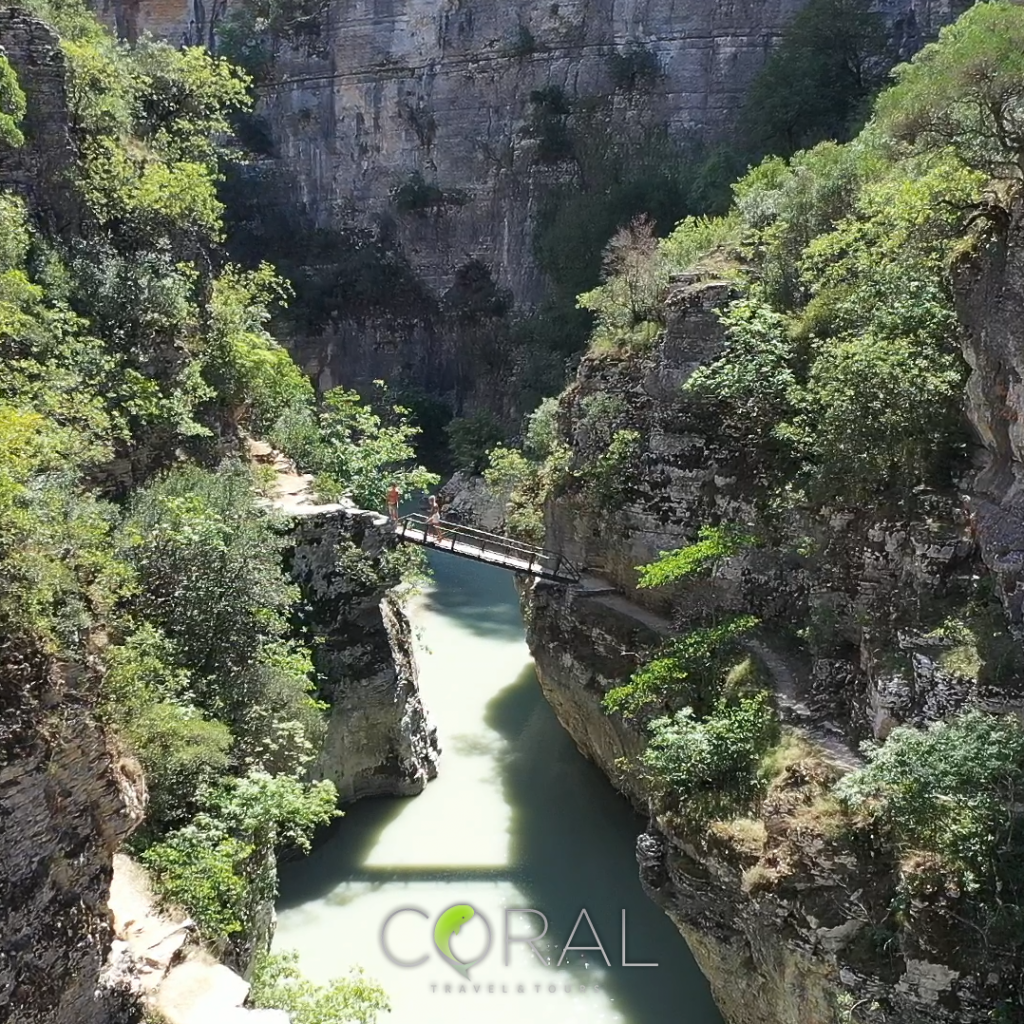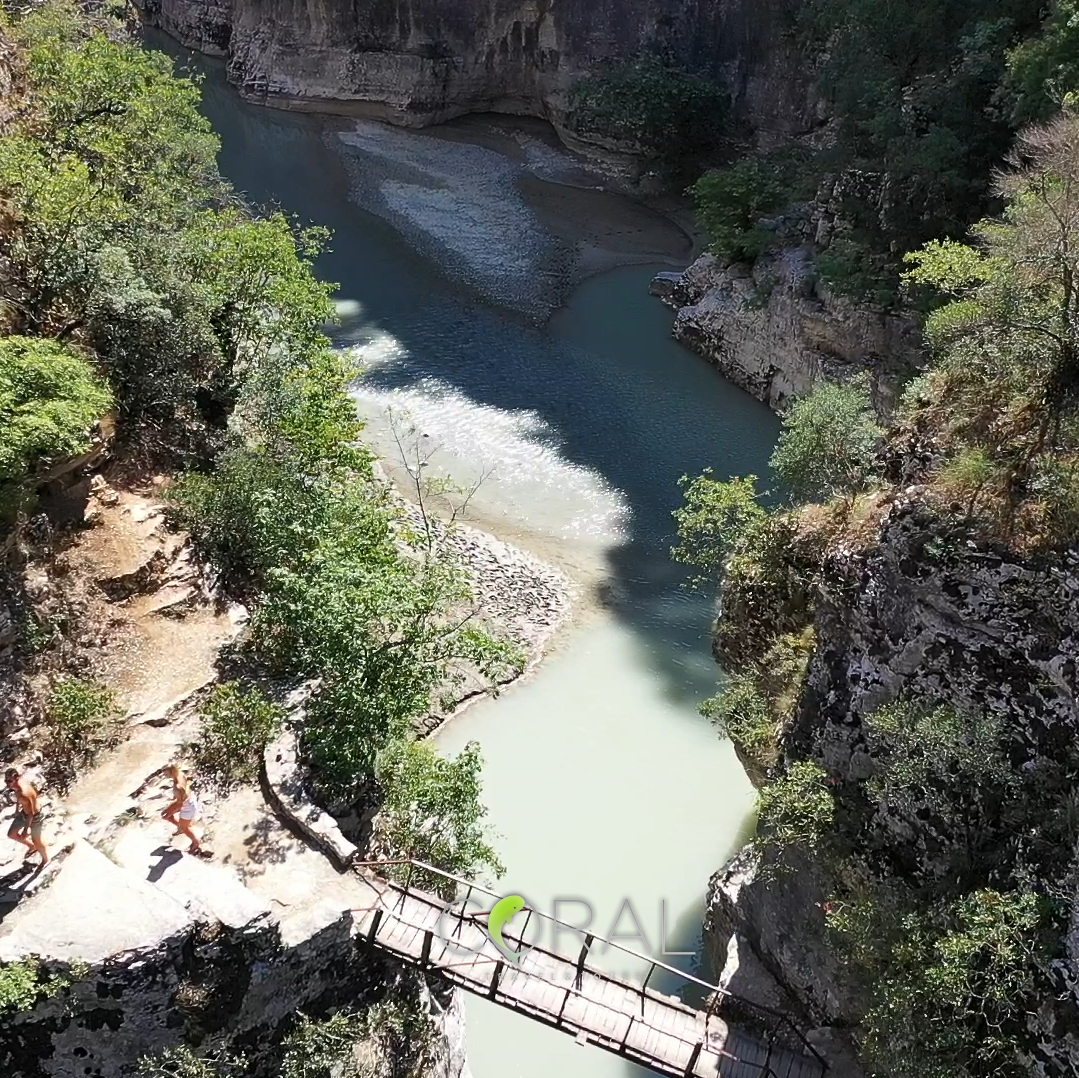History:
The Osum Canyon (Albanian: Kanioni i Osumit) is a river canyon in southern Albania, near the town of Çorovodë. The river Osum, which passes through the town of Berat, flows through the canyon. Osumi river canyon is one of the most spectacular natural attractions of Albania. During the spring, high water from melting snow makes it possible to explore the whole length of the canyon from the river. Spring is also the best time to view the many waterfalls in the canyons, which thunder from above as explorers pass below on boats. The rapids are Class II, so one does not need prior white water experience to navigate them. At the end of the summer, when the water is lower, the full length of the canyon is not navigable, but there are various walks with opportunities for swimming in various pools and streams.


The edges of the canyon have an unusual ecosystem that preserves the greenery on
both sides of canyon year-round. Mediterranean bushes like heath and briar
flourish along with a rich flora and fauna. On the slopes of the canyon,
erosion has created pockmarked cavern walls with small caves. Some of the rock
formations in the canyon have fanciful names such as the Cathedral, the Eye,
and the Demon’s Door.
The canyon is 26 km (16 miles) long, at an altitude of 450 m. They are thought
to have been formed 2-3 million years ago by water erosion. There are many
underground passages and unexplored caves throughout the length of the canyon.
It is generally thought that many years ago the river flowed underground, but
over time the rock above the river disappeared, creating the current form of the
canyon. In the gulf of this canyon that is passed from Osum river in both its
sides, outflow falls from different villages which pass in a rock chain, the
slopes of the canyon erosion have created a rock chain, one of the
rarest found in Albanian canyons.

